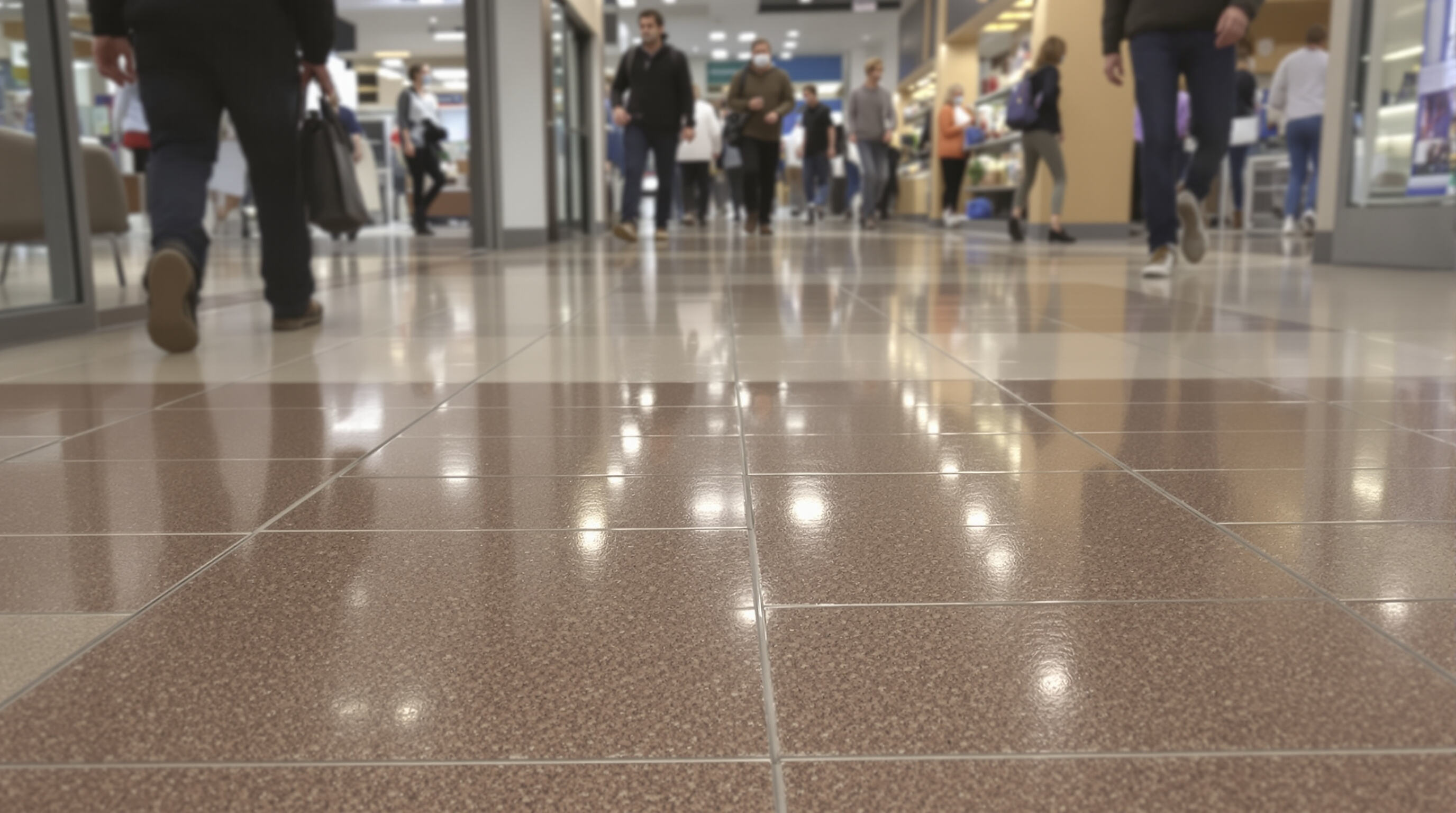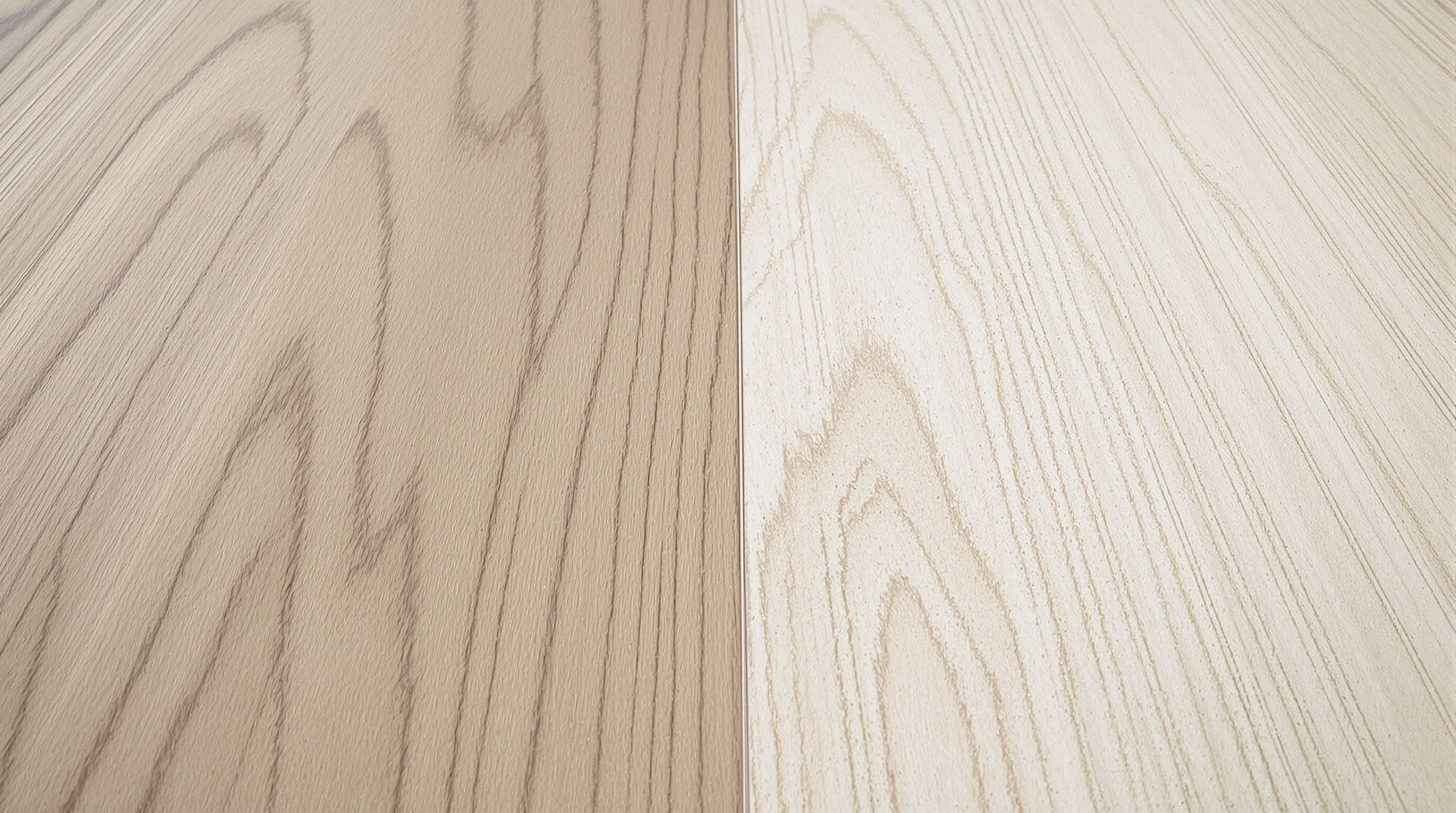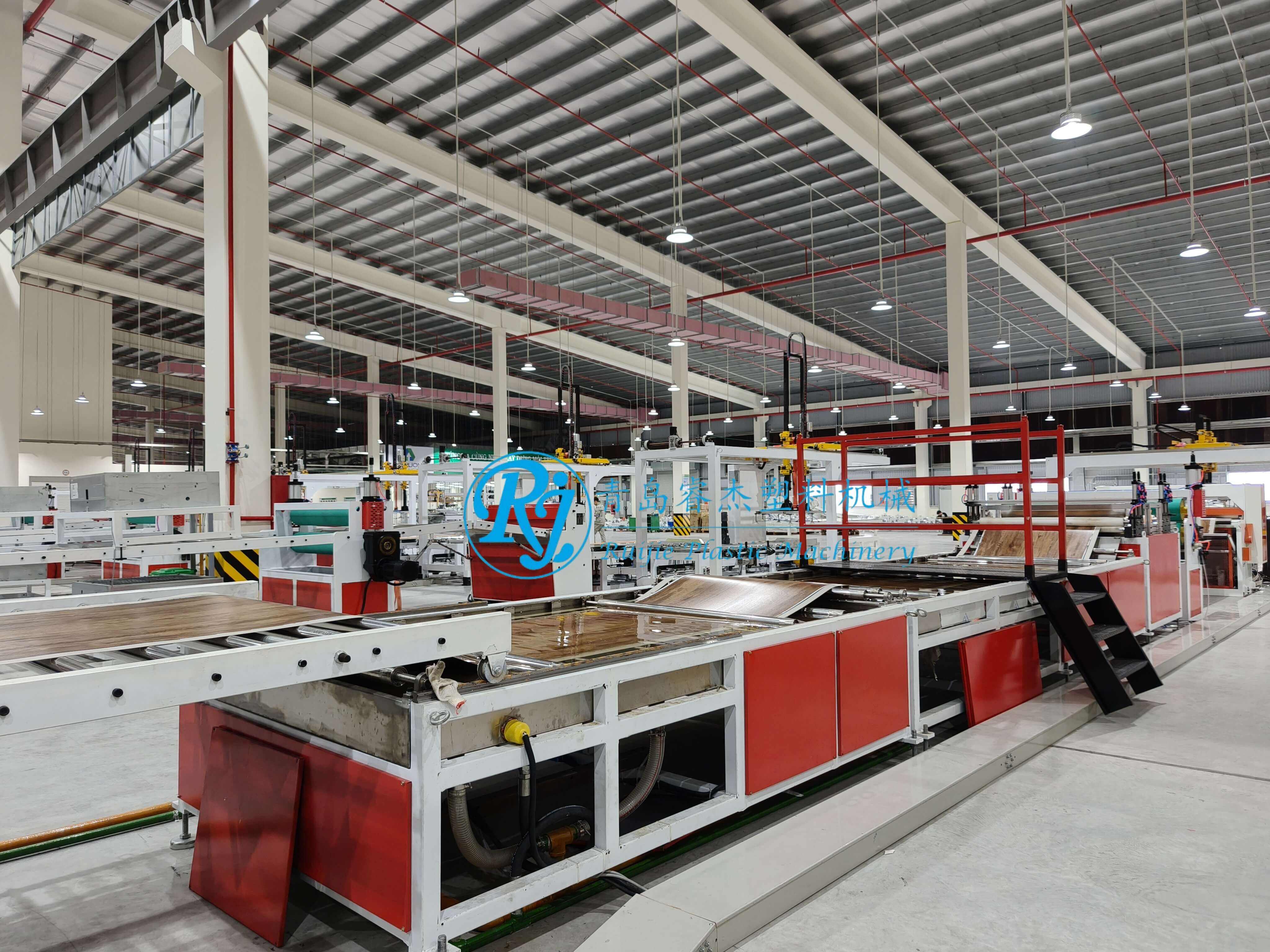The Rise of LVT Elastic Flooring in Contemporary Interior Design
Growing Demand for Luxury Vinyl in Residential and Commercial Projects
The luxury vinyl tile (LVT) market is really taking off these days, mostly because cities keep growing and new buildings pop up everywhere. According to a recent industry report from 2024, around 57 out of every 100 LVT installations worldwide are happening in commercial settings such as offices and stores. Meanwhile, homes are catching on too, with residential LVT usage jumping about 32% compared to last year. The same 2024 Flooring Materials Report points to several reasons behind this popularity boom. Contractors love how tough LVT is, especially in places where lots of people walk through all day long. Retail centers, apartment complexes, and other busy spots find it much more practical than traditional options. Plus, it just makes financial sense for property managers looking to balance quality with budget constraints.
Luxury Vinyl Flooring Trends Shaping Modern Interiors
Design trends today are all about finding the sweet spot between looking good and working well. Locking in on this trend, LVT elastic flooring has become a big deal in recent years, with options that go from classic herringbone wood looks to sleek stone-like finishes that make any space feel modern. The tech behind digital printing has really taken off too, creating those almost real 3D effects that architects love. According to Market Data Forecast for 2024, around 9 out of 10 architects are specifying LVT when they need something that matches natural materials visually. Looking across Europe, the market for these floors is growing steadily at about 7.5% per year, which explains why so many hotels and commercial spaces are switching to them lately.
Shift From Traditional Materials to Advanced LVT Solutions
More and more people are giving up on hardwood floors and ceramic tiles because they cost so much to maintain and get damaged easily when exposed to moisture. The layered design of LVT flooring includes a tough outer layer that wears well and a core that resists water damage, which means these floors can last anywhere from three to five times longer in damp areas compared to traditional options. Many companies making LVT products have started using recycled materials too, sometimes as much as 25 percent in each tile, along with adhesives that contain fewer volatile organic compounds. This helps meet green building standards without sacrificing the feel of something natural underfoot. As a result, we're seeing LVT become a go to choice for modern homes where durability meets environmental responsibility.
Unmatched Durability and Practical Performance of LVT Elastic Flooring

Moisture-Resistant and Durable Properties of Luxury Vinyl
LVT elastic flooring brings together modern polymer tech and moisture resistant cores, so it stands up really well against water damage in places like bathrooms, kitchens, and damp basements. Hardwood floors tend to warp when they get humid, while tile grout often becomes a breeding ground for mold over time. But LVT just keeps going strong even after being around water for ages. Some recent numbers from the Flooring Industry Report indicate that this water resistance actually cuts down on replacement costs by about 40% when compared to older materials used in areas prone to moisture issues.
Long-Term Performance in High-Traffic Environments
LVT flooring has this protective wear layer that's usually between 0.3mm to 0.7mm thick, which gives it real good resistance to scratches, dents, and those annoying UV fade issues over time. When manufacturers put these floors through grueling tests that simulate about ten years worth of constant walking, they found something interesting. After all that punishment, LVT still looked pretty much like new at around 92% of its original condition. That's way better than what we see from laminate flooring at just 78%, or even engineered wood at only 65%. So if someone is looking at installing floors somewhere busy, like stores, office buildings, or maybe even houses where there are lots of kids running around or pets scratching at things, LVT stands out as a smart choice because it just holds up so much better under pressure.
Comparative Lifespan Analysis: LVT vs. Hardwood and Tile
| Material | Average Lifespan | Moisture Resistance | Maintenance Cost/Year |
|---|---|---|---|
| LVT Flooring | 25–30 years | Excellent | $120 |
| Hardwood | 15–25 years | Poor | $300 |
| Porcelain Tile | 20–40 years | Excellent | $200 |
Industry studies confirm LVT’s cost-effectiveness, with a 30-year lifecycle costing 60% less than maintaining natural materials. Its scratch-resistant surface and waterproof core eliminate refinishing needs, unlike wood or tile regrouting requirements.
Realistic Aesthetics and Advanced Textured Surfaces in LVT Flooring

Vinyl Flooring Mimicking Natural Materials (Wood, Stone)
The latest LVT elastic flooring looks so real these days that it's almost scary how close it gets to actual natural materials, all because of better digital imaging tech. According to some numbers from the Flooring Innovation Institute back in 2024, around 8 out of 10 design pros said their clients couldn't tell the difference between top quality vinyl and real wood or stone anymore. The manufacturers get this level of realism by scanning original materials at super high resolutions - like 2400 DPI - which picks up all those tiny details we normally associate with real stuff, such as the way minerals run through slate or how oak trees grow ring after ring over time. For interior designers working on projects that need that connection to nature but don't want the hassle of maintaining real wood or stone, these near-perfect copies are becoming a game changer.
Realistic Textures Such as EIR (Embossed in Register) and Micro-Bevels
LVT flooring today manages to look real while feeling real thanks to special embossing methods. The EIR technique (that's embossed in register for those keeping track) matches up the texture patterns exactly with what gets printed on top. This has become pretty much standard practice for high end floorings these days. Another neat trick is micro beveling around the edges which adds that extra bit of depth, kind of like how shadows fall naturally when someone installs wood floors by hand. All these little details help break up the same old look across big areas, plus they offer better grip underfoot. That makes LVT especially good choice for places like busy restaurant kitchens or hospital corridors where safety matters most.
Advancements in Printing and Embossing Technology
The latest generation of LVT flooring now incorporates nano laser etching techniques along with UV cured wear layers. These advancements create surface textures that look just like real sandblasted limestone with all those tiny pores, weathered barn wood with authentic cracks, and even the reflective veins found in polished marble. Manufacturers have also introduced new 12 layer pressing systems which apply both protective coatings and textures at the same time during production. According to research published in Sustainable Materials Journal last year, this process cuts down on manufacturing waste by around 17% when compared to previous methods. What does this mean for actual installations? Well, these improvements help ensure that LVT floors still look realistic and attractive even after being subjected to years of constant foot traffic in commercial spaces or busy households.
LVT Elastic Flooring in Modern, Minimalist, and Creative Design Applications
Use of Vinyl Flooring in Modern and Minimalist Design
LVT elastic flooring is now a staple in minimalist and contemporary interiors because it looks so much like real materials but keeps those clean, simple lines we all love. The planks are pretty slim at around 5 to 8mm thick, which means they can go from one room to another without any visible seams. This works great with the open floor plans that about three quarters of architects prefer these days according to Interior Design Magazine's 2023 report. Most minimalist spaces stick with neutral wood grain options such as European oak or even concrete effect LVT. These finishes bring that quiet sophistication to a space without overwhelming it, creating balance throughout the design.
Trending Tile Layouts Like Herringbone and Chevron
Designers increasingly leverage LVT’s modular flexibility to create dynamic patterns. Herringbone and chevron layouts now account for 34% of premium residential flooring projects—a 15% year-over-year increase according to Flooring Trends Quarterly. Unlike traditional hardwood, LVT allows these intricate designs without costly subfloor adjustments or material waste.
Achieving Seamless Visual Flow With Large-Format Planks
60cm x 120cm XL planks reduce grout lines by 83% compared to standard tiles, creating uninterrupted sightlines ideal for studio apartments and office spaces. This format enhances perceived room size while providing the scratch resistance needed for commercial environments (up to AC5 rating).
Creative Pattern Integration and Mixed Material Aesthetics
Today's luxury vinyl tile (LVT) designs feature eye-catching geometric patterns and metallic accents that really stand out on the floor. According to a recent market study from last year, around 4 out of 10 hotel interior designers are now opting for LVT planks of varying widths to mimic the look of expensive terrazzo or traditional parquet flooring, all while cutting down on installation expenses by nearly a third. The latest improvements in how surfaces feel underfoot have opened up exciting possibilities too. Designers can mix matte finish wood grain LVT with shiny stone-like tiles that still match perfectly when using similar color schemes throughout the space.
Sustainability and Interior Design Compatibility of LVT Elastic Flooring
Eco-Friendly Innovations and Recyclable LVT Compositions
LVT elastic flooring these days manages to bring together green features and good performance thanks to materials that can be recycled. Around two thirds of all manufacturers are actually putting recycled stuff from consumers back into their vinyl floors these days, which cuts down on what ends up in landfills by about 30 percent when compared with old fashioned materials according to Green Building Council stats from last year. The newer formulas work pretty well too, finding that sweet spot between lasting long and being part of a circular system. Things like plasticizers made from plants and cores without phthalates help reduce harm to the environment while still keeping the floor tough enough against normal wear and tear.
Indoor Air Quality and Low-VOC Certifications
Elastic LVT flooring actually ticks all the boxes when it comes to indoor air quality. About nine out of ten products get those coveted low-VOC certifications like FloorScore or GREENGUARD Gold. What does this mean? The floors emit less than 50 micrograms per cubic meter of formaldehyde and under 500 for total VOCs overall. That makes them pretty safe for places where people spend a lot of time together like schools, hospitals, and homes run by folks who care about their environment. Plus, many manufacturers now use water based urethane coatings instead of solvents, which cuts down on harmful stuff floating around in the air we breathe.
Interior Design Compatibility Across Diverse Styles
LVT’s visual versatility bridges gaps between aesthetic trends and functional needs:
| Design Style | LVT Adaptation | Traditional Material Limitations |
|---|---|---|
| Modern Minimalist | Monochromatic large-format planks | Limited texture options in ceramic tile |
| Rustic Farmhouse | Embossed woodgrain textures | Hardwood susceptibility to moisture |
| Eclectic Maximalist | Bold geometric patterns | Carpet’s staining risks |
This adaptability, combined with its 7–25 year lifespan, positions LVT as a cross-style solution for residential and commercial projects prioritizing both design cohesion and sustainability.
Frequently Asked Questions
What is LVT elastic flooring?
LVT, or Luxury Vinyl Tile, is a versatile flooring option that emulates natural materials such as wood and stone. It is known for its durability, water resistance, and cost-effectiveness in various settings.
How does LVT compare to hardwood or tile flooring?
LVT generally offers better moisture resistance, lower maintenance costs, and greater resilience in high-traffic areas compared to traditional hardwood and tile. It has a lifespan of 25–30 years, making it a durable option.
Is LVT a sustainable flooring choice?
Yes, many manufacturers incorporate recycled materials into LVT production, reducing environmental impact. It also often meets low-VOC standards, ensuring good indoor air quality.
Can LVT mimic natural materials accurately?
Advanced technology allows LVT to closely resemble natural materials like wood and stone, with realistic textures and color patterns, making it nearly indistinguishable from the real thing.
Table of Contents
- The Rise of LVT Elastic Flooring in Contemporary Interior Design
- Unmatched Durability and Practical Performance of LVT Elastic Flooring
- Realistic Aesthetics and Advanced Textured Surfaces in LVT Flooring
- LVT Elastic Flooring in Modern, Minimalist, and Creative Design Applications
- Sustainability and Interior Design Compatibility of LVT Elastic Flooring
- Frequently Asked Questions
